Abstract
Tissue culture cells of a Rous virus-induced rat tumor undergo syncytium formation when placed in contact with mouse embryo cell cultures infected with murine leukemia viruses. This phenomenon can be used as a cytopathic end point for isolating and titrating these viruses in tissue culture. The principle should be applicable to detection of leukemia viruses of other species.
Full text
PDF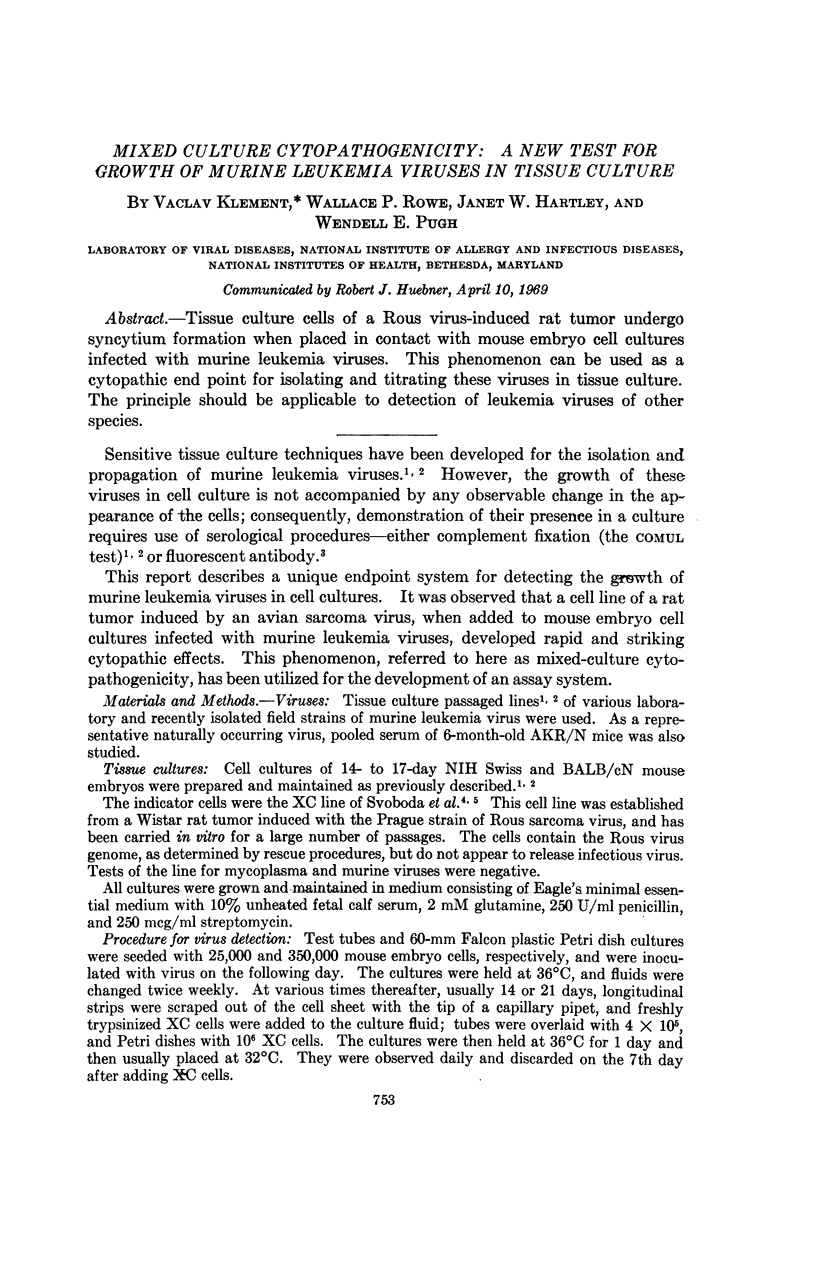

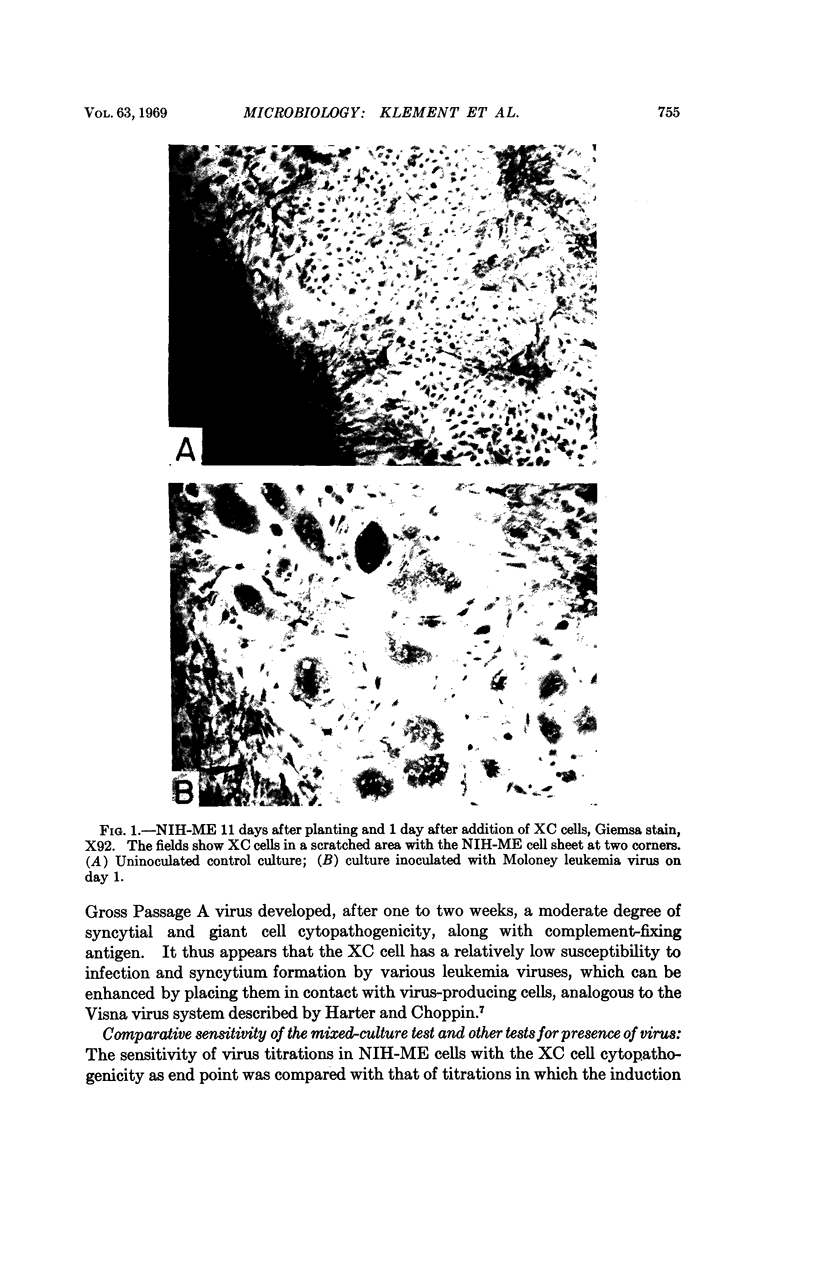
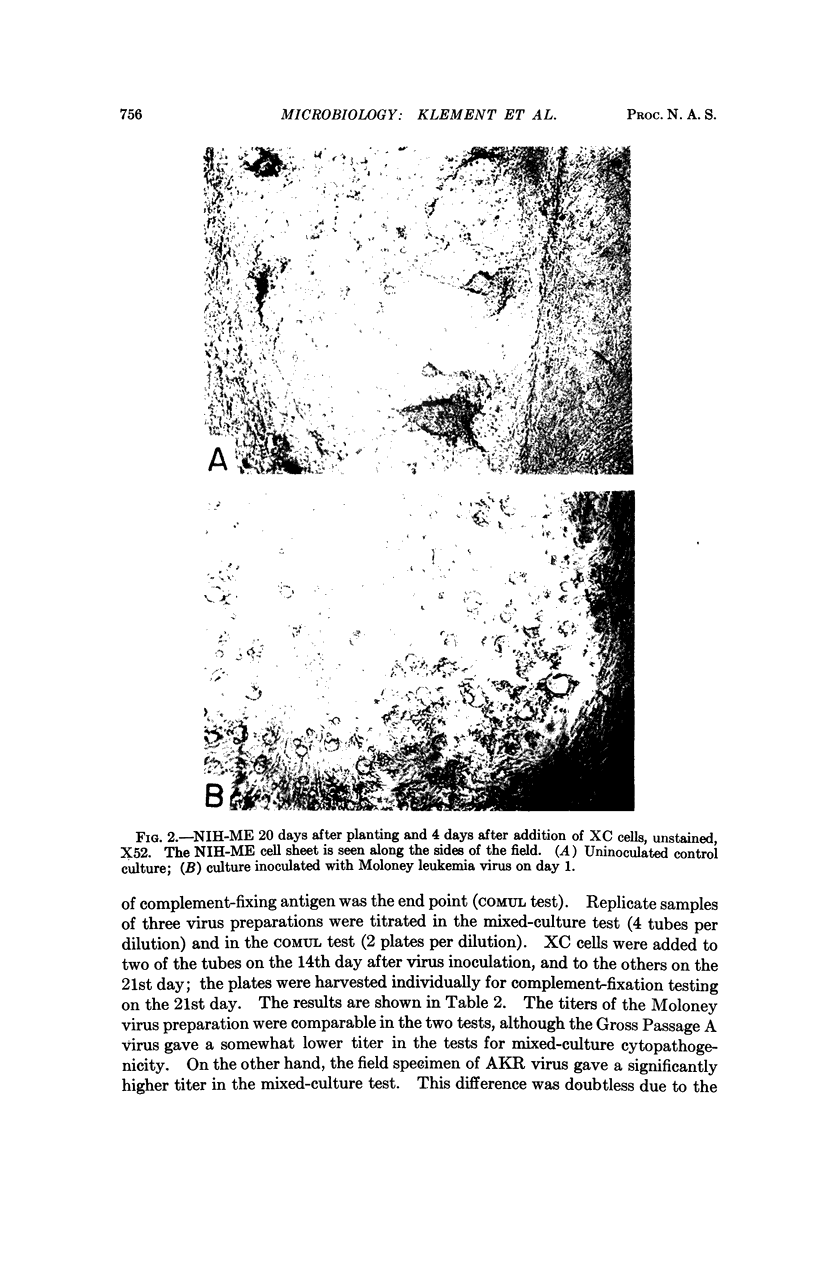
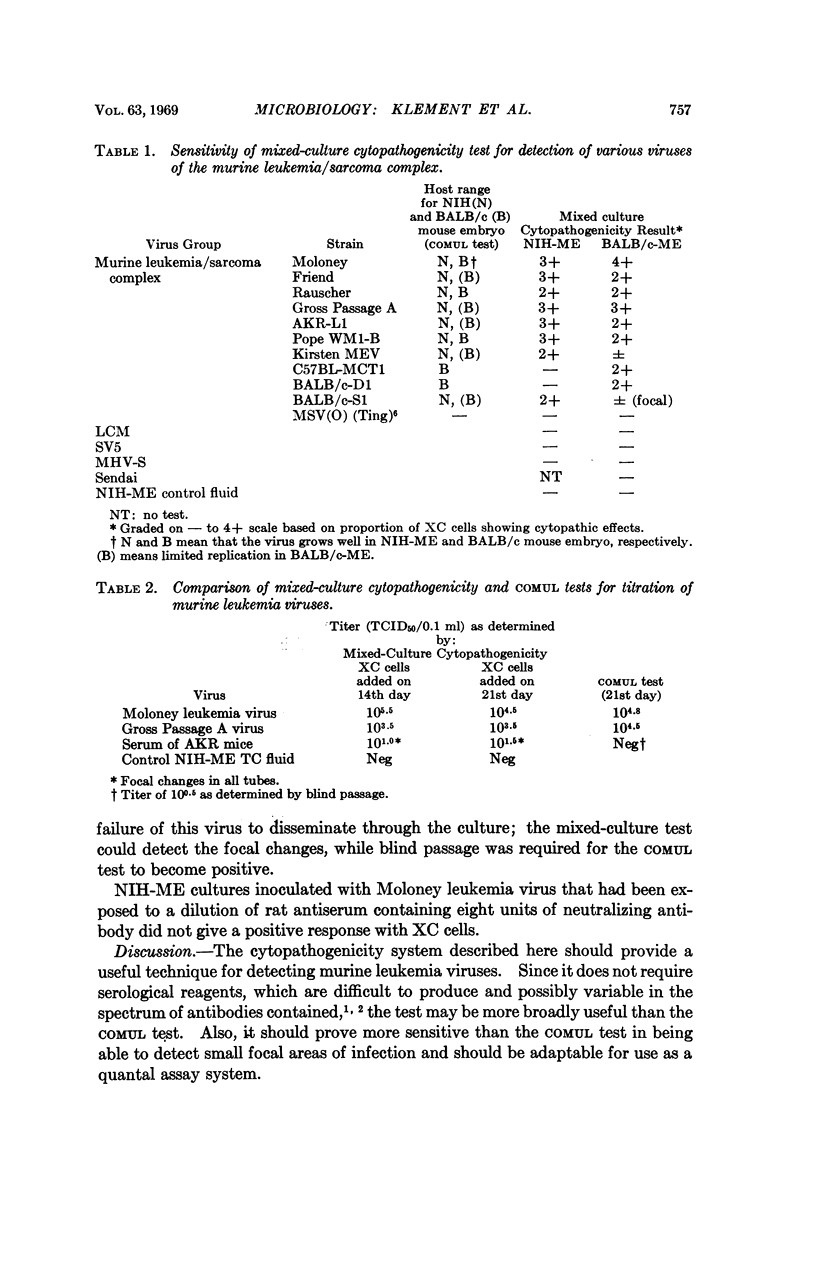
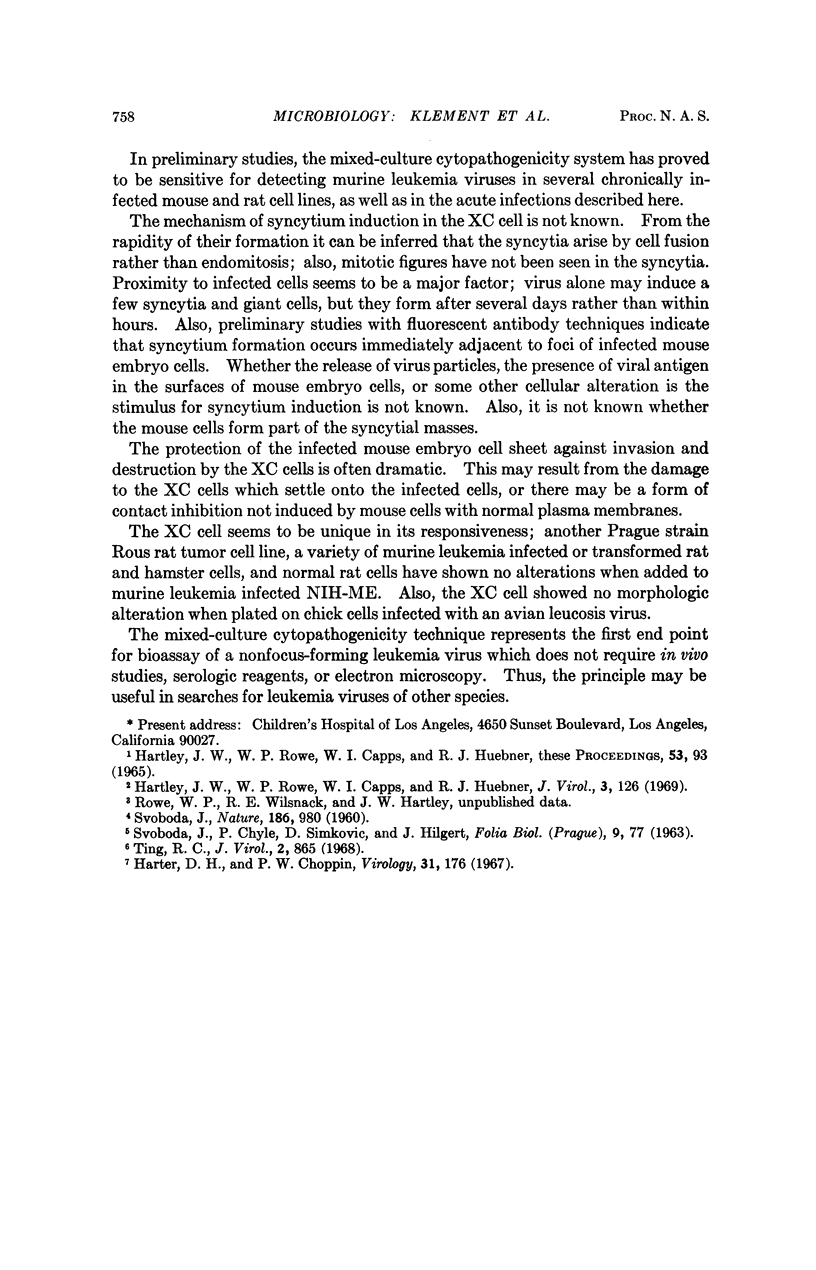
Images in this article
Selected References
These references are in PubMed. This may not be the complete list of references from this article.
- Harter D. H., Choppin P. W. Plaque assay of Visna virus using a secondary cellular overlay as an indicator. Virology. 1967 Jan;31(1):176–178. doi: 10.1016/0042-6822(67)90025-6. [DOI] [PubMed] [Google Scholar]
- Hartley J. W., Rowe W. P., Capps W. I., Huebner R. J. Isolation of naturally occurring viruses of the murine leukemia virus group in tissue culture. J Virol. 1969 Feb;3(2):126–132. doi: 10.1128/jvi.3.2.126-132.1969. [DOI] [PMC free article] [PubMed] [Google Scholar]
- SVOBODA J., CHYLE P., SIMKOVIC D., HILGERT I. Demonstration of the absence of infectious Rous virus in rat tumour XC, whose structurally intact cells produce Rous sarcoma when transferred to chicks. Folia Biol (Praha) 1963 Apr;9:77–81. [PubMed] [Google Scholar]
- SVOBODA J. Presence of chicken tumour virus in the sarcoma of the adult rat inoculated after birth with Rous sarcoma tissue. Nature. 1960 Jun 18;186:980–981. doi: 10.1038/186980b0. [DOI] [PubMed] [Google Scholar]
- Ting R. C. Biological and serological properties of viral particles from a nonproducer rat neoplasm induced by murine sarcoma virus (Moloney). J Virol. 1968 Sep;2(9):865–868. doi: 10.1128/jvi.2.9.865-868.1968. [DOI] [PMC free article] [PubMed] [Google Scholar]






